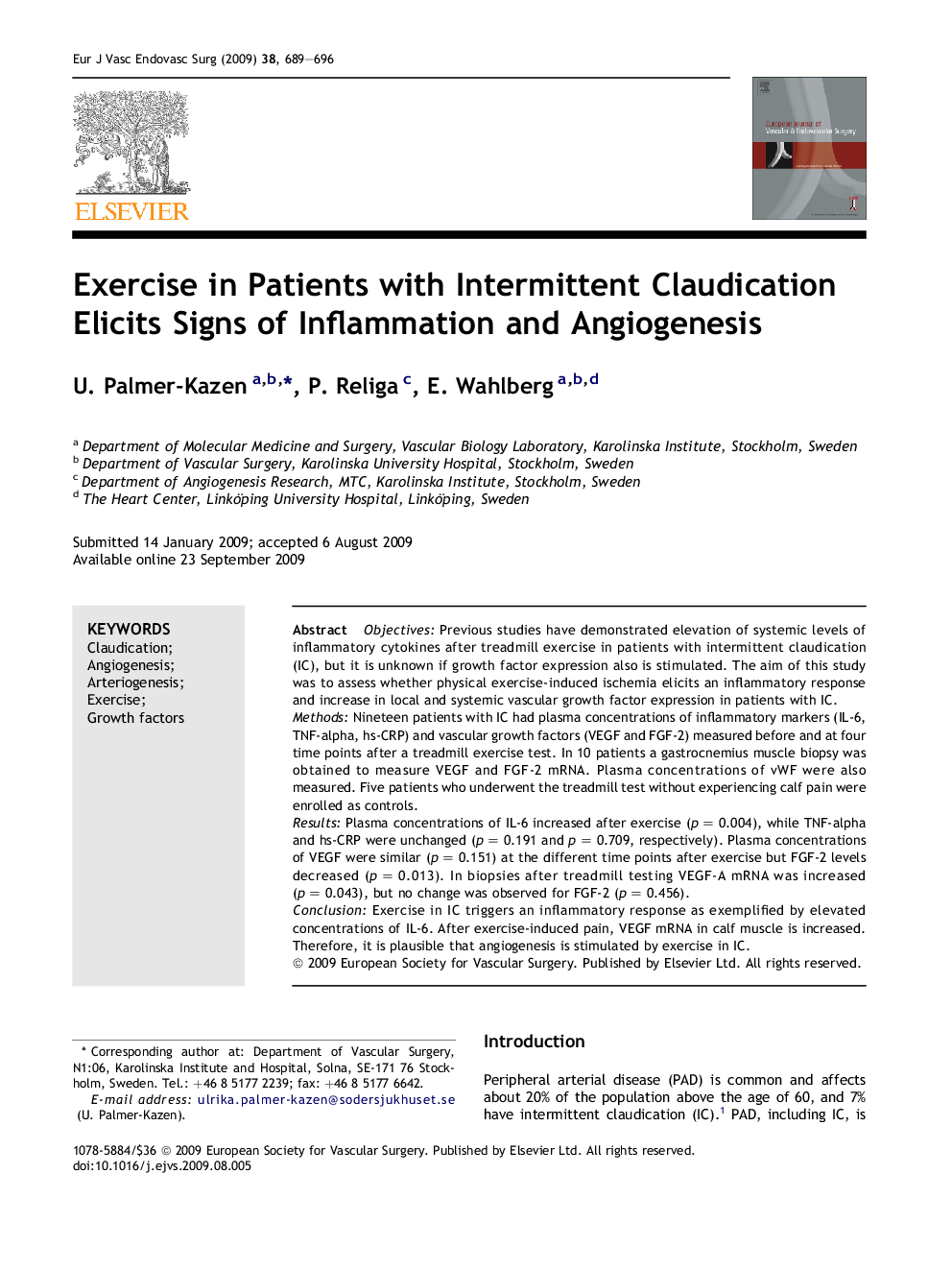| Article ID | Journal | Published Year | Pages | File Type |
|---|---|---|---|---|
| 2914395 | European Journal of Vascular and Endovascular Surgery | 2009 | 8 Pages |
ObjectivesPrevious studies have demonstrated elevation of systemic levels of inflammatory cytokines after treadmill exercise in patients with intermittent claudication (IC), but it is unknown if growth factor expression also is stimulated. The aim of this study was to assess whether physical exercise-induced ischemia elicits an inflammatory response and increase in local and systemic vascular growth factor expression in patients with IC.MethodsNineteen patients with IC had plasma concentrations of inflammatory markers (IL-6, TNF-alpha, hs-CRP) and vascular growth factors (VEGF and FGF-2) measured before and at four time points after a treadmill exercise test. In 10 patients a gastrocnemius muscle biopsy was obtained to measure VEGF and FGF-2 mRNA. Plasma concentrations of vWF were also measured. Five patients who underwent the treadmill test without experiencing calf pain were enrolled as controls.ResultsPlasma concentrations of IL-6 increased after exercise (p = 0.004), while TNF-alpha and hs-CRP were unchanged (p = 0.191 and p = 0.709, respectively). Plasma concentrations of VEGF were similar (p = 0.151) at the different time points after exercise but FGF-2 levels decreased (p = 0.013). In biopsies after treadmill testing VEGF-A mRNA was increased (p = 0.043), but no change was observed for FGF-2 (p = 0.456).ConclusionExercise in IC triggers an inflammatory response as exemplified by elevated concentrations of IL-6. After exercise-induced pain, VEGF mRNA in calf muscle is increased. Therefore, it is plausible that angiogenesis is stimulated by exercise in IC.
